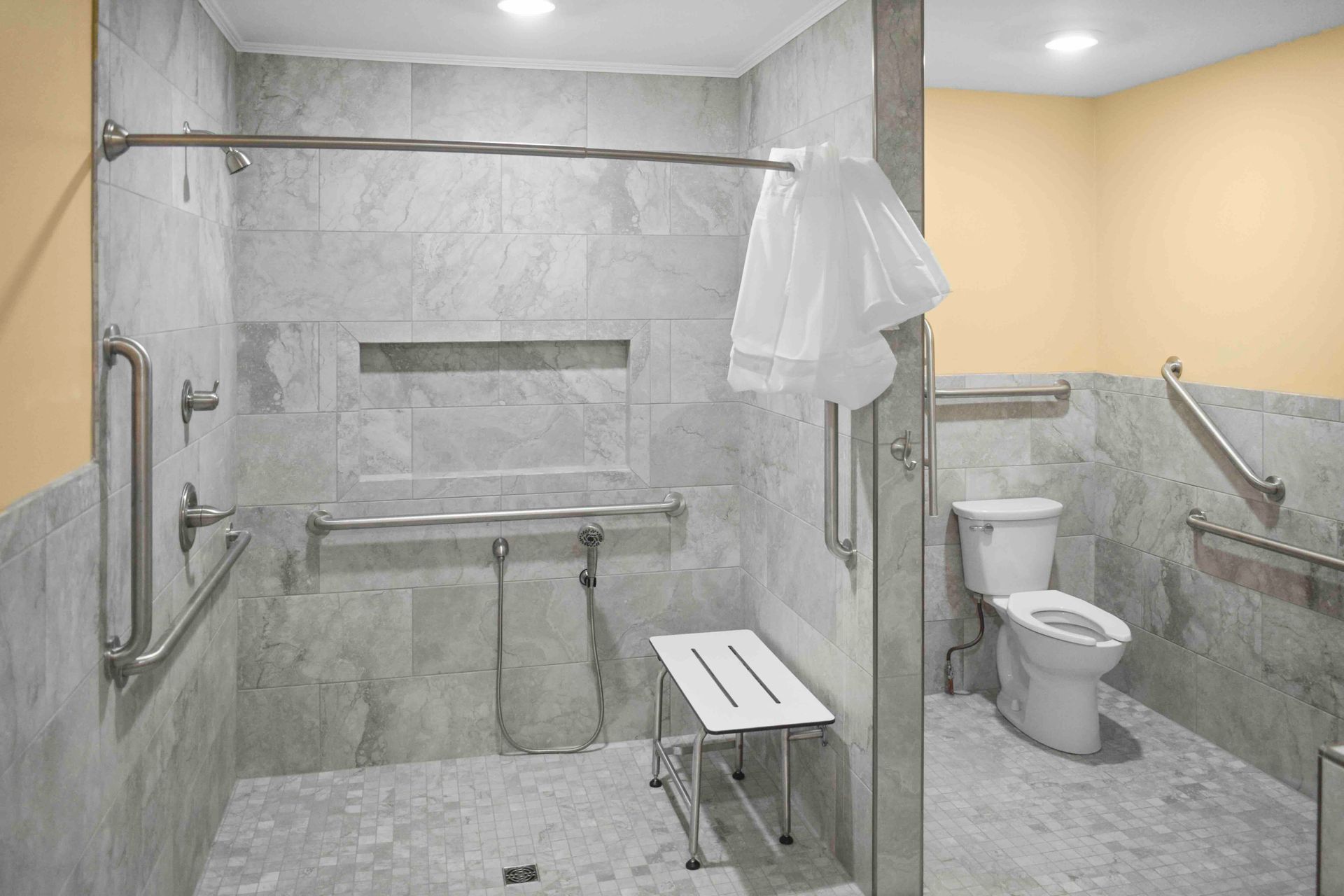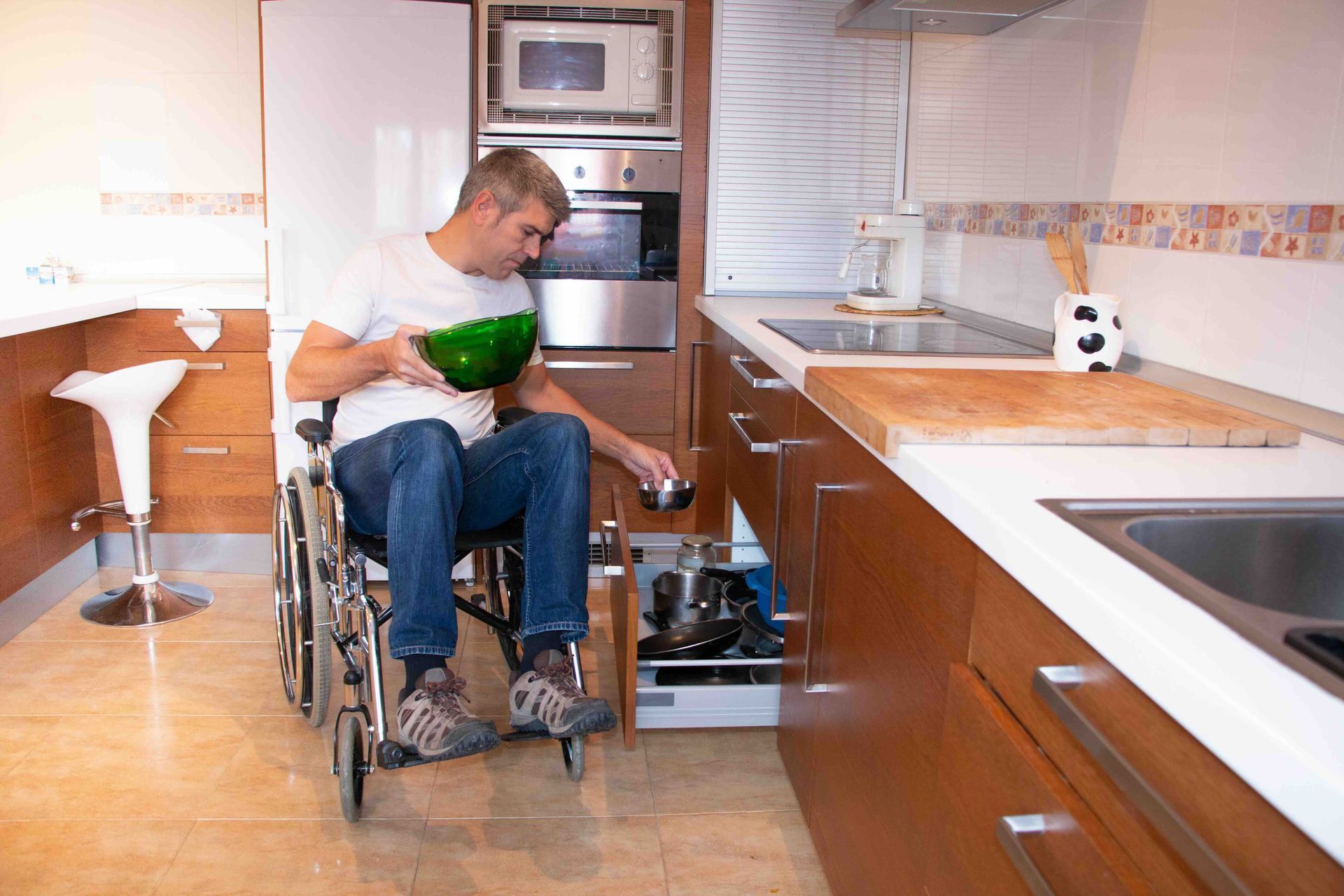How to Master Patient Lift Transfers: Step-by-Step Safety Tips for Caregivers
Providing care for individuals with limited mobility often involves a crucial yet challenging task: transferring them safely from one surface to another. While manual transfers can put both the patient and the caregiver at risk of injury, patient lifts offer an invaluable solution, significantly enhancing safety and comfort. However, operating these devices requires skill, precision, and a thorough understanding of safety protocols.
The Importance of Safe Patient Transfers
Before getting into the mechanics, it's vital to grasp why safe patient transfers are paramount. Incorrect lifting techniques are a leading cause of musculoskeletal injuries among caregivers, including back strains, shoulder injuries, and sprains.
For patients, improper transfers can lead to falls, fractures, skin tears, and increased fear or anxiety. Utilizing patient lifts, when done correctly, mitigates these risks dramatically. They reduce the physical strain on caregivers, allowing for more sustainable and less fatiguing care, while simultaneously providing a secure and dignified experience for the patient.
Are you looking for an expert resource in accessible spaces, special modifications for persons with mobility challenges, and more? Contact Lakeshore Barrier Free today.
Understanding Your Patient Lift: A Prerequisite for Safety
Patient lifts for homes come in various forms, each designed for specific needs and environments. Common types include:
- Hoyer Lifts (Manual/Hydraulic): These are manually operated lifts that use a hydraulic pump to raise and lower the patient. They are generally more economical but require physical effort from the caregiver.
- Electric Lifts (Powered): These lifts use an electric motor for effortless raising and lowering, often controlled by a handheld remote. They are more expensive but significantly reduce caregiver strain.
- Stand-Up Lifts: Designed for patients who have some weight-bearing capability but need assistance standing and transferring (e.g., from bed to commode).
- Ceiling Lifts: Permanently installed tracks on the ceiling that allow for transfers throughout a room or even multiple rooms. These offer the greatest flexibility and reduce floor obstructions.
Regardless of the type, every caregiver must thoroughly familiarize themselves with the specific lift they will be using. This includes reading the manufacturer’s manual cover-to-cover, understanding all controls, weight capacities, maintenance requirements, and emergency procedures. Never assume familiarity based on previous experience with a different model.
Pre-Transfer Preparation: The Foundation of a Safe Lift
Successful and safe patient transfers begin long before the lift is even moved into position. Meticulous preparation is key to preventing accidents and ensuring a smooth process.
1. Assess the Patient and Environment:
- Patient's Condition: Evaluate the patient's current physical and mental state. Are they alert and able to follow instructions? Do they have any new pain or discomfort? Are there any medical devices attached (catheters, IVs) that need to be managed?
- Weight and Mobility: Confirm the patient's weight is within the lift's specified capacity. Understand their level of mobility – are they completely dependent, or can they offer some assistance?
- Destination Readiness: Ensure the destination surface (bed, wheelchair, commode) is stable, locked, and at the appropriate height. Remove any obstacles in the transfer path.
- Clear the Area: Clutter is a hazard. Clear the immediate area around both the starting and ending points of the transfer. Remove rugs, furniture, or anything that could impede the lift's movement or cause a trip.
- Lighting: Ensure adequate lighting so you can clearly see the patient, the lift, and the surrounding environment.
2. Gather Necessary Equipment:
- Appropriate Sling: This is perhaps the most critical component. Slings come in various sizes, materials, and designs (e.g., full body, U-shape, commode, bathing). Select a sling that is suitable for the patient's size, condition, and the type of transfer. Always check the sling for wear and tear, frayed seams, or damage before each use. A damaged sling is a significant safety risk.
- Lift Device: Ensure the lift is fully charged (if electric) or has sufficient hydraulic fluid (if manual). Check that all casters are functioning properly and the frame is stable.
- Additional Items: Depending on the transfer, you might need pillows, blankets, or positioning aids for comfort.
3. Communication is Key:
- Explain the Process: Even if the patient has cognitive impairment, explain each step of the transfer in simple, calm language. This helps reduce anxiety and fosters cooperation.
- Establish a Signal: Agree on a signal (e.g., "ready?") to ensure both caregiver and patient are prepared before initiating movement.
- Encourage Participation: If the patient can assist, encourage them to do so within their capabilities. This promotes their independence and reduces the overall effort required.
Step-by-Step Patient Lift Transfer: A Detailed Guide
This section outlines a general procedure. Always refer to your specific lift’s manual for detailed instructions.
Step 1: Positioning the Patient and Applying the Sling
- Patient Positioning (Supine/Lying): If the patient is in bed, gently roll them to one side, away from the lift. Place the folded sling underneath them, ensuring the bottom edge of the sling is positioned correctly (e.g., at the tailbone for a full-body sling). Roll the patient back onto their supine position, pulling the sling through so it's centered under their body. Ensure the head support is correctly placed if applicable.
- Patient Positioning (Seated): If the patient is seated (e.g., in a wheelchair), position the sling behind them, ensuring it’s evenly distributed and the leg straps are accessible.
- Leg Strap Application: Carefully bring the leg straps between the patient's legs. Cross the leg straps for added security and to prevent slipping, then attach them to the appropriate hooks on the spreader bar. Double-check that all straps are securely attached and not twisted. Different slings and lifts may have specific attachment points or methods (e.g., loop slings, clip slings).
- Arm Positioning: Ensure the patient's arms are either inside the sling or comfortably resting outside, away from any moving parts.
Step 2: Positioning the Lift and Attaching the Sling
- Maneuver the Lift: Bring the lift’s base as close as possible to the bed, chair, or floor, ensuring the legs of the lift are spread as wide as possible for maximum stability. Position the lift’s mast over the patient.
- Attach Sling Loops to Spreader Bar: Carefully attach the loops of the sling to the hooks on the lift’s spreader bar. Work systematically, starting with the shoulder loops, then the leg loops. Ensure all loops are securely seated in the hooks and are not tangled. Some slings have color-coded loops to aid in proper attachment and ensure the patient is level during the lift.
- Verify Connections: Before raising the patient even slightly, double-check every single connection point – from the sling to the patient, and the sling to the lift. This crucial step prevents falls.
Step 3: Performing the Lift
- Communicate and Prepare: Remind the patient what is about to happen. "We're going to lift you up now."
- Engage the Lift Mechanism:
- Manual/Hydraulic Lift: Slowly pump the hydraulic lever to raise the patient.
- Electric Lift: Use the handheld remote control to gently raise the patient.
- Monitor the Patient: As the patient is lifted, continuously observe their comfort, body alignment, and any signs of distress. Ensure their head is supported and their limbs are not caught.
- Lift Just Enough: Raise the patient only high enough to clear the current surface and any obstacles during the transfer. Lifting them excessively high is unnecessary and can increase instability.
Step 4: Transporting the Patient
- Maintain Control: Keep a firm grip on the lift’s handles.
- Smooth Movements: Move the lift slowly and deliberately. Avoid sudden jerks or turns.
- Navigate Obstacles: Be mindful of doorways, furniture, and uneven flooring. Use the lift’s steering handles to guide it. Always push the lift from the mast or the handles, never pull from the patient or the sling.
- Clear Path: Ensure the path to the destination is completely clear.
Step 5: Lowering the Patient to the Destination
- Position Over Destination: Carefully maneuver the lift so the patient is directly over the center of the destination surface (bed, wheelchair, commode).
- Adjust Height: Align the patient’s feet with the edge of the bed or seat.
- Lower Gently:
- Manual/Hydraulic Lift: Slowly open the release valve to gently lower the patient. Control the descent rate.
- Electric Lift: Use the remote control to slowly lower the patient.
- Ensure Proper Seating/Placement: Guide the patient into the desired position. For a bed, ensure they are centered. For a wheelchair, ensure their buttocks are against the backrest and their feet are on the footrests.
- Release Pressure: Once the patient is fully supported by the destination surface, ensure their weight is off the sling. You might need to gently push down on their knees to ensure they are seated properly.
- Detach Sling: Once the patient is safely situated and fully supported, carefully detach the sling loops from the spreader bar.
- Remove Sling (if applicable): If the sling is not intended to remain under the patient, gently roll the patient to one side to remove the sling.
Post-Transfer Procedures and Ongoing Safety
The transfer isn't truly complete until these final steps are observed.
- Patient Comfort and Safety: Ensure the patient is comfortable, properly positioned, and has access to necessary items (call bell, water). Adjust blankets or pillows as needed.
- Equipment Management:
- Return Lift to Charging Station: If electric, return the lift to its charging station immediately after use to ensure it’s ready for the next transfer.
- Clean and Store Sling: Remove the sling, inspect it for soiling or damage, and clean it according to manufacturer guidelines. Store it in a designated, clean area.
- Clean and Store Lift: Wipe down the lift as needed. Store it in a safe, accessible location, ensuring it doesn't block pathways.
- Documentation: Document the transfer, noting the time, patient's tolerance, and any observations. This is crucial for continuity of care and record-keeping.
- Ongoing Maintenance: Regularly inspect the lift and slings as per the manufacturer's recommendations. Look for loose bolts, worn parts, damaged cables, or frayed slings. Report any issues immediately and do not use compromised equipment. Schedule professional maintenance as required.
Troubleshooting Common Challenges
Even with careful planning, challenges can arise during patient transfers.
- Patient Anxiety/Resistance: If a patient is anxious or resistant, pause the transfer. Reassure them, explain the steps again, and if necessary, involve another caregiver or a family member to help calm them. Never force a transfer.
- Sling Slippage: If the sling appears to be slipping, immediately lower the patient back to the starting surface if safe to do so. Re-assess the sling application, ensuring it's properly sized and positioned, and that the leg straps are correctly crossed and secured.
- Lift Malfunction: If the lift malfunctions (e.g., won't raise/lower, makes unusual noises), refer to the manufacturer’s troubleshooting guide. If the patient is suspended, locate the emergency lowering mechanism (usually a red knob or lever) and follow the manual's instructions for emergency descent. Do not attempt to use a malfunctioning lift.
- Limited Space: In confined spaces, plan your movements meticulously. Consider using a lift with a smaller footprint or a ceiling lift if available. Sometimes, repositioning furniture beforehand is necessary.
When to Seek Assistance
Even for experienced caregivers, there are times when it’s essential to ask for help.
- Patient Weight Exceeds Capacity: Never attempt to lift a patient who exceeds the lift’s weight capacity.
- Patient is Uncooperative or Combative: If the patient is resisting significantly and there's a risk of injury to them or yourself, seek assistance.
- Unfamiliarity with Equipment: If you are unsure how to operate a specific lift or apply a particular sling, do not proceed until you have received proper training.
- Physical Limitations: If you are feeling unwell, injured, or simply don't feel strong enough for a particular transfer, ask for help. Prioritizing your own safety is crucial for sustainable caregiving.
- Complex Medical Needs: Patients with complex medical conditions (e.g., severe contractures, unstable spinal injuries) may require specialized transfer techniques or additional personnel. Consult with a healthcare professional (nurse, physical therapist) for guidance.
Key Takeaways
Mastering patient lift transfers is an indispensable skill for caregivers. It transforms what could be a physically taxing and potentially dangerous task into a safe, efficient, and comfortable experience for both the patient and the caregiver.
By adhering to meticulous pre-transfer preparation, following step-by-step procedures, maintaining open communication, and prioritizing ongoing equipment maintenance, caregivers can significantly reduce the risk of injury and enhance the quality of care provided. Remember, safety is not an option; it is the fundamental principle that underpins every successful patient transfer. Regular training, continuous learning, and a proactive approach to safety are the cornerstones of becoming a truly skilled and compassionate caregiver.
TALK TO THE EXPERTS OF LAKESHORE BARRIER FREE TODAY!
We believe that everyone should have access to every area of their home! We work directly with you to make sure that every grab bar, bathroom sink, kitchen countertop, patient lift, and more is at the perfect location for you and your loved ones. Call us at
(616) 477-2685 or email us at
Info@LakeshoreBarrierFree.com
Share this blog







